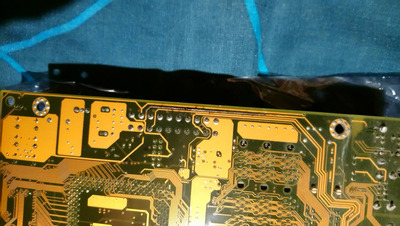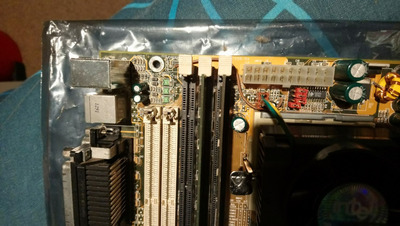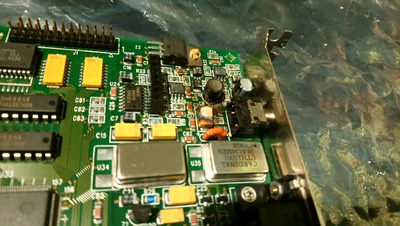First post, by teh_Foxx0rz
I bought myself a ReelMagic CD Lite (the long ISA MPEG-1 decoder card) and was eager to play around with the handful of games which specifically require it. It was listed as "tested and working", so naturally I figured it'd be a matter of putting it in and testing it (and simply not getting functionality at worst).
I put it into my Pentium MMX system, and...nothing. The power supply wouldn't turn on.
Foolishly, I presumed the power supply had failed. So I tried a different one, and...
Heard a fizzle.
It turned out that a tantalum capacitor on the Reelmagic card had just burst.
Checking it for continuity, it was shorted through, and it appears it sat between the 12V and ground. So, for a brief moment in time, 12V was getting directly shorted to ground in this PC.
A complicating coincidence is that I found I'd misaligned the connector between the SoundBlaster Live and the Live Drive. For a while, I thought this was the problem, and was kicking myself. However, getting back to it more recently and replicating the misalignment while using the initial power supply, but only the Live and graphics card in the system, the power supply starts up the system just fine, and doesn't appear to have 12V in its pinout anyway. And the initial power supply worked just fine in a different system too; it seems as though it must have a short-detection feature or something, so presumably, that capacitor was shorted already. So, I feel confident that the shorted capacitor is the cause of the problems here.
And now, while the system (minus the ReelMagic card - that's been moved far away from it, and there isn't a 12V short in the rest of the system either) appears to function at first glance, I get endless bluescreen errors in Windows 95, particularly with SoundBlaster Live drivers, and it appears as though the other two ISA sound cards I had in there no longer initialise in DOS.
I even tried a spare SoundBlaster Live card with the same number (SB0060) and got the same issue. This is with the same Windows 95 installation that had been working prior to this incident, so I don't think it's Windows, this time. I also tried a completely fresh install, and was met with the same kinds of bluescreen errors.
My motherboard is an MSI MS-5158. They seem to have skyrocketed in price since I bought this, if they come up at all. Otherwise I'd just buy another and at least have more to work with when troubleshooting.
I sadly don't have a lot of other motherboards I can troubleshoot the other cards I mentioned with as well, and that can be an arduous and long-winded prospect anyway, but given I've tried a different SoundBlaster Live and got the same errors (and with only the graphics card in the system otherwise), it comes across as most likely a motherboard fault in my estimation. Although there also doesn't appear to be any physical damage on it.
Would anyone happen to have any idea what could have got damaged on the motherboard by a 12V short? Or if there's anything else I could do to try troubleshooting? Hopefully it could be repairable, but I'm braced for if it's not. I sadly can't find any schematics for this board, but I figure those with more knowledge of PC motherboards would have an idea of what usually runs off of 12V, or what tends to get damaged first in situations like these, perhaps.
Very gutted, but it's sadly how things go sometimes. I'll definitely be sure to check old cards more thoroughly in future, if I can get what I have working again.
Thanks.



